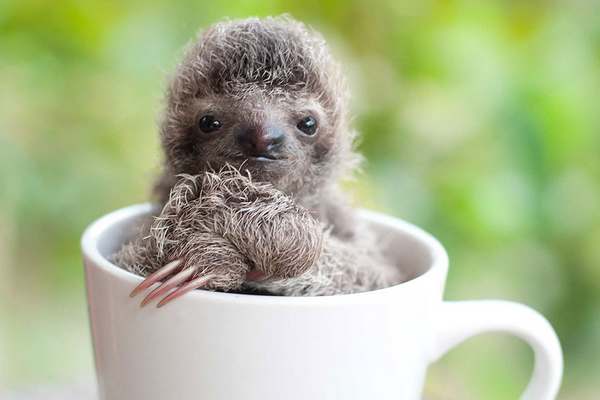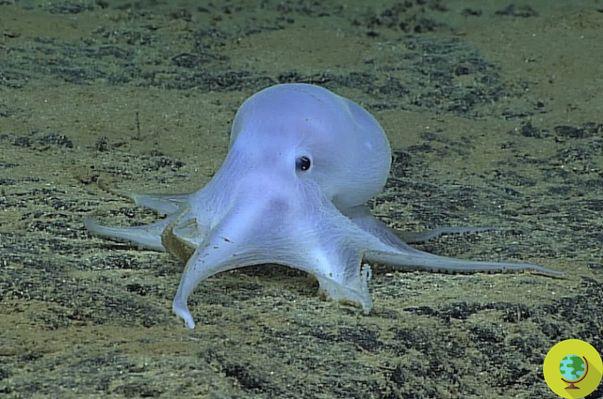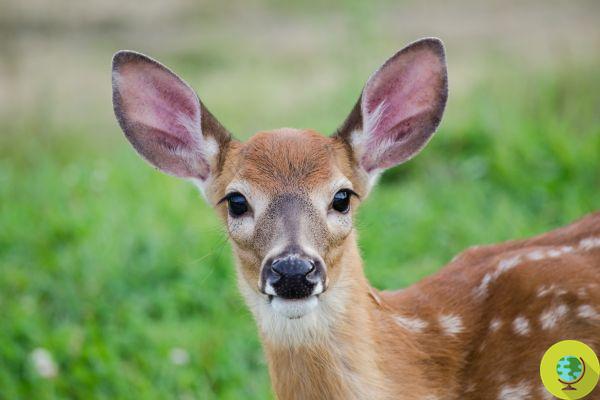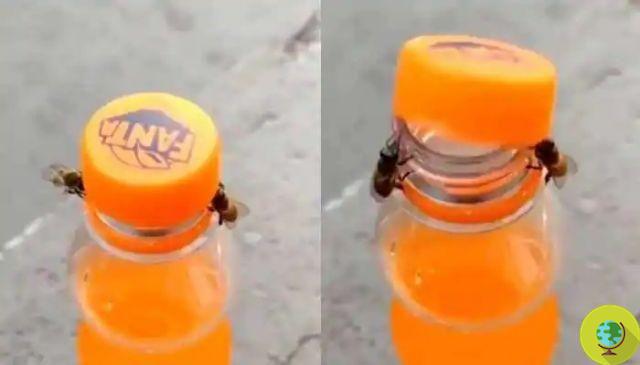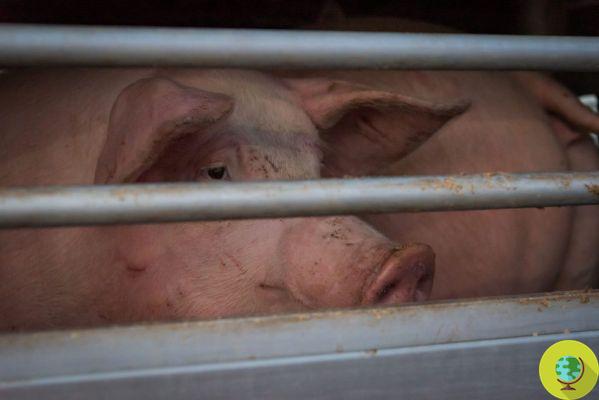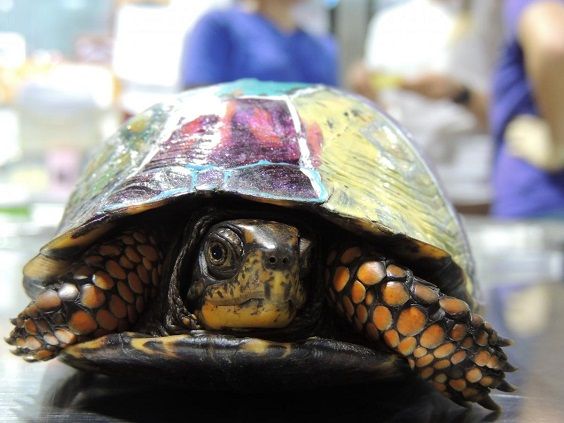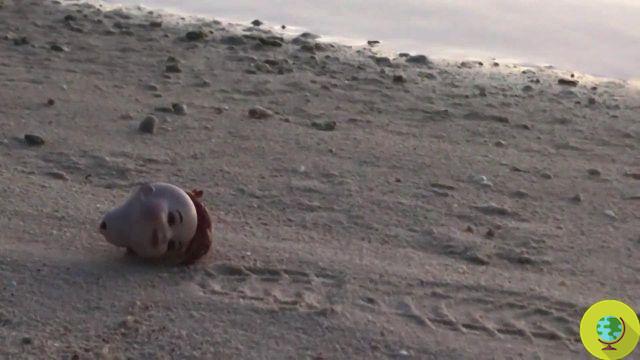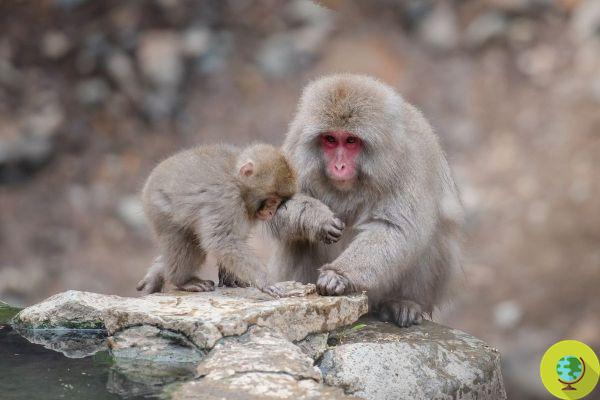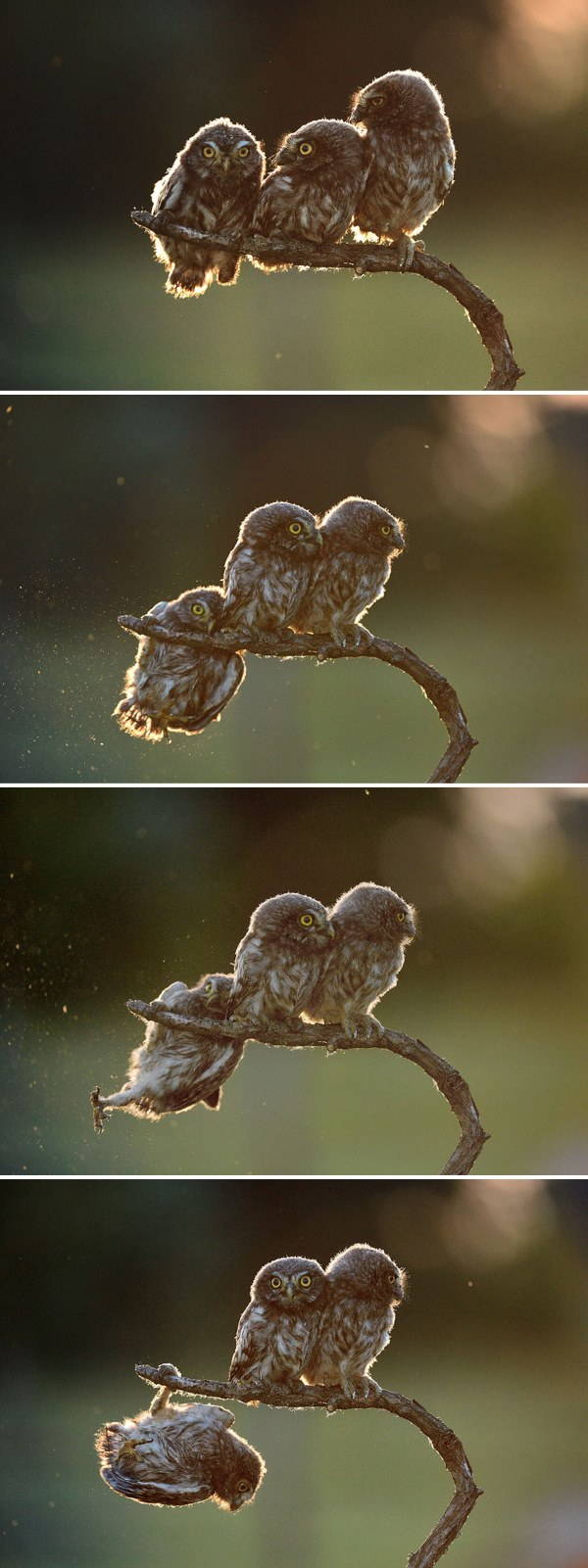A new study adds another animal to the small circle of bioluminescent mammals (possums and flying squirrels): the platypus
He is about to end up run over, his mother saves himJust like two other mammals (flying squirrels and possums), platypuses also glow blue-green under UV light. The discovery that the fur of these animals is bioluminescent is reported in a new study from Northland College, Wisconsin (USA).
In itself, the platypus is a very special animal. It is an oviparous mammal, that is, it lays eggs but then also breastfeeds its cubs. It has a very characteristic appearance: hairy body, flat and hairless tail, webbed feet (males have spurs on their hind legs loaded with venom) and a broad beak like that of a duck. But among its characteristics now there is also one more peculiarity.
An American research team, which published the results of the study in the journal Mammalia, found that the platypus's fur glows green and blue under ultraviolet (UV) light, meaning it is biofluorescent.
In normal light, a platypus's very dense fur, useful for isolating and protecting it when in cold water, is dark brown but what UV light revealed on a stuffed museum specimen was a big surprise to researchers. .
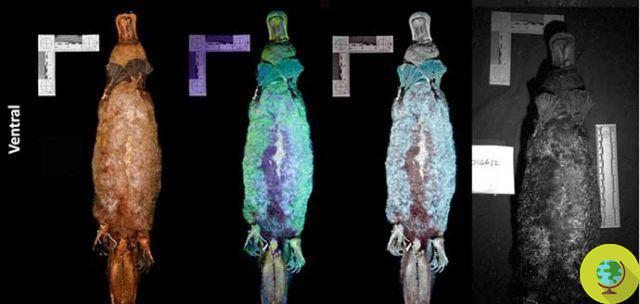
© Mammalia
Biofluorescence, the phenomenon whereby living organisms absorb and re-emit light of a different color, is widespread in fish, amphibians, birds and reptiles. It is much rarer to find bioluminescent mammals and this one it is the first time that even an oviparous mammal has been discovered to have this characteristic.
Until now, biofluorescence was only known in two mammals: flying squirrels, which are placental mammals, and possums, which are marsupials.
The discovery of the fluorescent glow of platypuses came by exposing two specimens from Tasmania, Australia, part of the collection of The Field Museum in Chicago, to UV light. Both specimens, a male and a female, exhibited bioluminescence, according to the study.
Scientists then tested a third specimen at the University of Nebraska State Museum in Lincoln, and that platypus, which hailed from New South Wales, Australia, also glowed blue-green in UV light.
The study found that the platypus's fur absorbs UV rays (wavelengths of 200-400 nanometers) and re-emits visible light (500-600 nanometers), making it fluorescent.
Ma why is the platypus bioluminescent?
There are several hypotheses: there are those who believe that this could be a way to adapt to low light conditions, a system that platypuses have to see and interact with each other in the dark.
But, since platypuses don't rely heavily on sight, it's possible that their biofluorescence isn't actually used to communicate with each other, or for mating purposes, but to reduce visibility to predators, as is the case with some crustaceans. biofluorescent.
Field research still needs to be done to add details to this discovery, but in the meantime these animals are in danger and nearing extinction.
It's official! Platypuses are also on the verge of extinction
Fonti: Science Daily / Mammalia
Read also:
- Spotted "bioluminescent" dolphins off the coast of Newport, which shine again thanks to the lockdown
- Bioluminescence: the magical show that illuminates New Zealand caves (VIDEO)
- Bioluminescence: creatures with extraordinary powers populate the oceans





